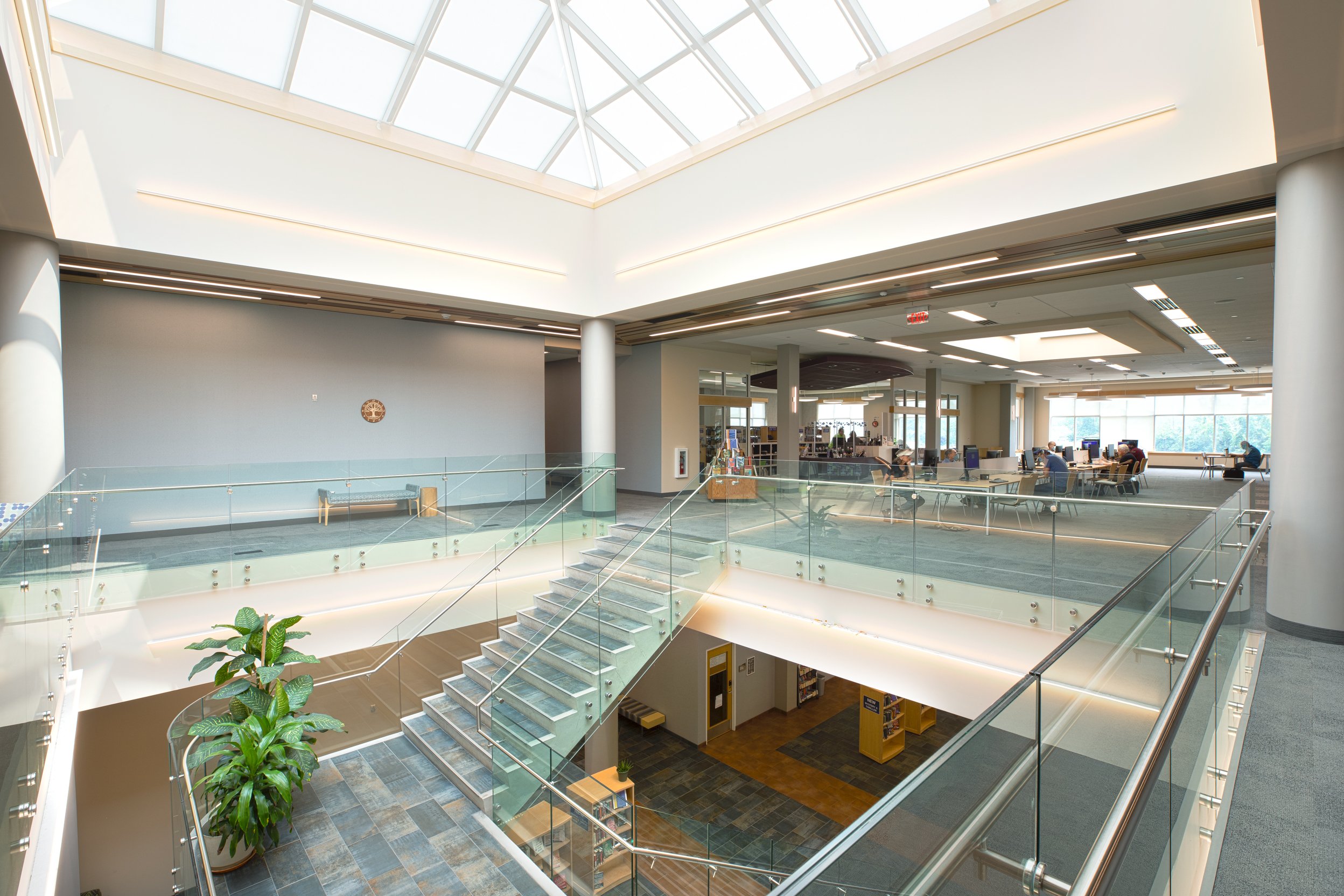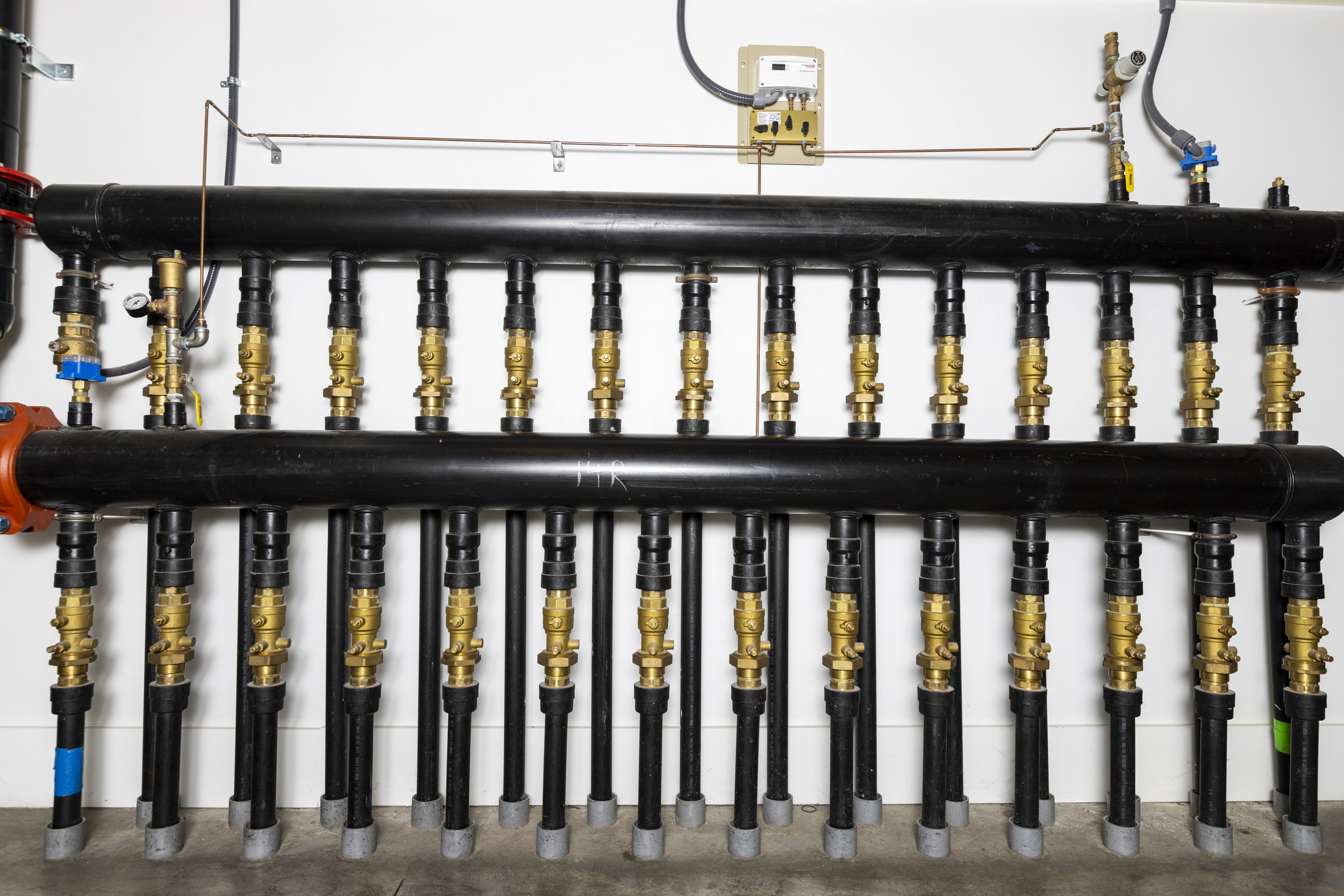EmPOWERing Spaces: The Essentials of Building Electrification
Beneficial electrification of buildings and homes lies at the intersection of the triple bottom line: people, planet, and profit. There’s a lot to learn about the journey to all-electric, so we’ll start by answering some of the questions on why and how to electrify.
What’s so great about electric buildings?
Electric technologies are more efficient, and lead to lower operating costs
Electric buildings are healthy buildings
Electrification reduces pollution and mitigates climate impacts
Whether you’re a homeowner, a renter, or operating a business in a commercial building, heating and cooling costs can cut into how much money you have in the bank at the end of the month. Electric HVAC technologies like air-source and ground-source heat pumps have been gaining popularity over the last few decades as a way to reduce heating and cooling costs, and protect against the volatility of fossil fuel prices.
The modern consumer has high expectations for spending their money with organizations that can show a visible commitment to sustainability. Since the burning of fossil fuels to heat and cool buildings and water is the main source of emissions in our region, converting to a heat pump is one of the most impactful ways an organization can reduce their carbon footprint.
As for the third piece of the triple-bottom line, greenhouse gas emissions are negatively linked to public health, in obvious and subtle ways. It can be easy to follow the link between fossil fuel appliances like methane gas furnaces or stoves to worsened asthma and COPD, but it can be harder to see the connection between burning fossil fuels to get your work done and the increased severity of extreme weather or heat-related illnesses. Replacing fossil fuel technologies with heat pumps is better for our community today, and for future generations.
How are communities making the transition to electric buildings?
There are countless stories close to home that we can look to for electric building inspiration.
Ithaca, NY has a history of adopting city commitments that put the environment, the public, and the economy at the center. Our neighbor to the East was the first city in the country to commit to electrifying and decarbonizing all (yes, ALL) of its buildings. You can learn more about Electrify Ithaca here, and hear about their transition to electric school buses from our webinar here.
The RENEW (Rochester ENergy Efficiency and Weatherization) project is a local example of a holistic approach to health and sustainability. RENEW works with residents to make homes more energy-efficient, healthier, and safer by looking at the building and the family as a whole unit. They recognize that addressing one problem in a home - like drafty doors or windows - can have little to no impact if there are other problems impacting the family’s health or finances. Weatherization is a crucial step to enabling electrification. You can learn more about RENEW from our webinar, Addressing Health and Equity through Electrification.
When the City of Rochester wants to promote equity, combat redlining, and promote homeownership, they too go all-electric. The federally-funded Buy the Block program is building 100 new homes on city land, equipped with all-electric heating and cooling systems. All-electric is the future, the present, and the gold standard.
BlocPower is a for-profit organization using building electrification to improve community health and wellbeing. They are a Black-owned climate tech company whose mission is to make buildings smarter, greener, healthier, and more profitable, and they have completed over 1,200 projects to modernize and electrify buildings primarily in low income communities. You can learn more about their work by watching this AMPED webinar.
In our neck of the woods, we are seeing electrification at every level: from City and County government to local manufacturing; luxury hotels and high-end lofts to affordable housing. Check out an AMPED case study to see all the ways business owners and local leaders are putting electrification in action right here in our community.
What are barriers to implementing electrification strategies?
Despite growing awareness of the benefits of electrification, we don’t yet live in an all-electric world. The higher upfront costs of electric technologies for individuals, organizations, and regional utilities, unfamiliarity with new technologies, and our natural resistance to change are all barriers to the transition to all-electric.
Though technologies like heat pumps have been around for decades, there is still low public awareness about their efficacy. Spreading accurate information about how electric technologies work, and where they have been used successfully can help combat this unfamiliarity. Public demonstrations and programs that connect residents and businesses to incentives can help lower upfront costs and allow people to experience benefits first-hand.
Like most things, electrification is hard to do it alone. Thoughtful collaboration with utility companies that ensure everyone benefits from the transition can help mitigate one of the challenges with convincing stakeholders to move towards electrification.
Some states and municipalities are adopting legislation that mandates these changes. This can accelerate progress, but requires significant support through education, financial rebates, and incentives.
The (triple) bottom line
There are many great places to start on the journey to all-electric. Getting a free energy audit to understand your opportunity might be the best. Heat pumps are great options for heating, cooling, and hot water. Induction cooktops, electric ovens, electric washers, dryers, and even barbecues are commercially available at a range of prices.
Here at AMPED, we believe that we can save money, save energy, and invest in future generations by becoming an electric community. Whether you care about a resilient economy, public health, lower utility bills, sustainable businesses, or quality housing - there’s something to gain from going all-electric.
Want to learn more? This course, “Electrification and Green Building” offered by the U.S. Green Building Council, is available for free during the month of December 2023. Hear from an experienced green building professional and learn about the benefits of electrification, related technologies and strategies, and examples of what leading cities are doing.




